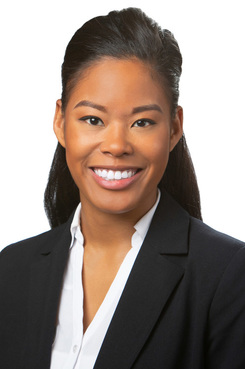Calif. High Court Avoids the 'California Rule' in Pension Benefits Change Decision
The Cal Fire decision was closely watched because the court's interpretation of the California Rule could significantly impact the opportunity for pension reform in California.
March 22, 2019 at 12:35 PM
6 minute read
 Yuki Cruse, with Meyers Nave.
Yuki Cruse, with Meyers Nave.
In its much-anticipated ruling in Cal Fire Local 2881 v. California Public Employees' Retirement System, the California Supreme Court avoided opining on the long-standing pension rule, known as the “California Rule,” which is a state court interpretation of constitutional law that prohibits reduction of pension benefits unless they are offset by comparable new benefits. The Cal Fire decision was closely watched because the court's interpretation of the California Rule could significantly impact the opportunity for pension reform in California. A narrow interpretation would keep the protective California Rule legal doctrine intact and state and local lawmakers' ability to revise the laws governing public employee pensions would continue to be hindered. On the other hand, a broader interpretation could have created the possibility of pension reform regarding reduction of benefits that have not yet been earned.
For now, the California Rule remains intact, but the state Supreme Court is expected to hear two cases that have resulted in a split among divisions in the First District Court of Appeal. Once again, public employers are hoping the court will take the opportunity presented by these two cases to open at least a small door to modifying specific pension benefits if not also a big door to larger pension reform.
Restricting 'Air Time' Triggered the Constitutional Case
The underlying issue in Cal Fire was whether the Legislature's 2012 pension reform law that eliminated current employees' ability to purchase additional service credit was unconstitutional. In 2003, employees participating in the CalPERS retirement system could receive pension benefits calculated on the basis of up to five years more public employment than they actually worked by purchasing additional service credit—commonly called “air time.” CalPERS touted the “air time” credit as a self-funded program, which would result in no additional cost to taxpayers. However, CalPERS' assumptions were incorrect. Employee contributions were far less than the actual cost of the benefits they received, resulting in additional cost to the pension plan and taxpayers.
In response to the state's significant unfunded pension liability, in September 2012, the Legislature enacted the Public Employees' Pension Reform Act (PEPRA), which reduced pension benefit formulas and increased employee pension contributions for new employees. PEPRA also severely restricted several forms of pension spiking, including “air time,” for both current and new employees. Pension spiking is where employees can increase their retirement allowance by increasing final compensation or including various nonsalary items in the final compensation figure used in the employee's retirement benefit calculations.
Court Addressed Public Employees' Vested Rights
Recognized employee organizations quickly challenged the validity of PEPRA, including Cal Fire Local 2881. The union argued the opportunity to purchase air time credit was a vested right protected by the contract clause of the California Constitution, such that PEPRA's elimination of the opportunity for existing employees to purchase air time credit violated both state and federal constitutional contracts clause. The Cal Fire Supreme Court disagreed.
The Supreme Court pointed out that the terms and conditions of public employment, unlike those of private employment, generally are established by statute rather than by contract. The court also recognized that it is well settled that public employees have no vested right in any particular measure of compensation or benefits and that these may be modified or reduced by the proper statutory authority.
Court Set Out Two Exceptions
The court articulated two exceptions that could create rights protected by the contract clause in public employment: when the statute or ordinance establishing the benefit and the circumstances of its enactment clearly evince a legislative intent to create contractual rights; and where certain benefits of public employment, such as pension rights, are protected by implication, even in the absence of a clear manifestation of legislative intent.
The court held there was no clear evidence suggesting the Legislature made an affirmative commitment to make the opportunity to purchase air time credit available indefinitely. The court also considered that pension rights have historically been afforded constitutional protection because they are seen as deferred compensation that becomes part of the contract of employment itself because pension benefits are earned by an employee's work. In contrast, air time credits are not akin to deferred compensation because a public employee could increase his or her pension benefit merely by purchasing the service credit and not through the employee's time in service.
The court concluded that California's public employees do not have a contractual right to the continued availability of the opportunity to purchase additional retirement service credit. Therefore, the question of whether PEPRA serves as an unconstitutional impairment of protected rights did not arise.
On the Horizon All Hope Is Not Lost
While the Cal Fire court did not disturb the California Rule, the court is expected to hear two cases that relate to pension spiking that may affect the rule's application to pension benefits— Alameda County Deputy Sheriff's Association v. Alameda County Employees' Retirement Association, (2018) 19 Cal.App.5th 61 (Alameda County) and Marin Association of Public Employees v. Marin County Employees' Retirement Association (2016) 2 Cal.App.5th 674 (Marin County).
In Marin County, Division Two of the First District Court of Appeal narrowly interpreted the California Rule, holding there is no absolute requirement that elimination or reduction of an anticipated retirement benefit “must” be counterbalanced by a “comparable new benefit.” Further, the court held that employees have a vested right in a “reasonable” pension, but not a right to “any fixed or definite benefits” that may be “fixed by the specific terms of the legislation during any particular period.” The Marin County court recognized that the public pension system is subject to the implied qualification that a governing body may make reasonable modifications and changes before the pension becomes payable.
However, in Alameda County, Division Four of the First District Court of Appeal was critical of the Marin County court's reliance on its “general sense of what a reasonable pension might be, rather than acknowledging that the Supreme Court has expressly defined a reasonable pension as one which is subject only to reasonable modification.” Thus, the Alameda County court found the Marin County court failed to properly weigh the justification for the impairment against the actual disadvantage to employees, which is a substantive part of the vested rights analysis.
Now that both cases—and the split among the divisions in the First District Court of Appeal—are before the Supreme Court, there is again, widely held anticipation that the court will interpret the California Rule in a way that could have a significant impact on the ability to implement pension reform—that is, if the court doesn't find a way to skirt the issue once again.
Yuki Cruse is an associate in Meyers Nave's Oakland office. She can be reached at [email protected] or 510-808-2000.
This content has been archived. It is available through our partners, LexisNexis® and Bloomberg Law.
To view this content, please continue to their sites.
Not a Lexis Subscriber?
Subscribe Now
Not a Bloomberg Law Subscriber?
Subscribe Now
NOT FOR REPRINT
© 2025 ALM Global, LLC, All Rights Reserved. Request academic re-use from www.copyright.com. All other uses, submit a request to [email protected]. For more information visit Asset & Logo Licensing.
You Might Like
View All
Apple Disputes 'Efforts to Manufacture' Imaging Sensor Claims Against iPhone 15 Technology

Lawsuit alleges racial and gender discrimination led to an Air Force contractor's death at California airfield
7 minute read
US Courts Announce Closures in Observance of Jimmy Carter National Mourning Day
2 minute read
'Appropriate Relief'?: Google Offers Remedy Concessions in DOJ Antitrust Fight
4 minute readTrending Stories
- 1'It's Not Going to Be Pretty': PayPal, Capital One Face Novel Class Actions Over 'Poaching' Commissions Owed Influencers
- 211th Circuit Rejects Trump's Emergency Request as DOJ Prepares to Release Special Counsel's Final Report
- 3Supreme Court Takes Up Challenge to ACA Task Force
- 4'Tragedy of Unspeakable Proportions:' Could Edison, DWP, Face Lawsuits Over LA Wildfires?
- 5Meta Pulls Plug on DEI Programs
Who Got The Work
Michael G. Bongiorno, Andrew Scott Dulberg and Elizabeth E. Driscoll from Wilmer Cutler Pickering Hale and Dorr have stepped in to represent Symbotic Inc., an A.I.-enabled technology platform that focuses on increasing supply chain efficiency, and other defendants in a pending shareholder derivative lawsuit. The case, filed Oct. 2 in Massachusetts District Court by the Brown Law Firm on behalf of Stephen Austen, accuses certain officers and directors of misleading investors in regard to Symbotic's potential for margin growth by failing to disclose that the company was not equipped to timely deploy its systems or manage expenses through project delays. The case, assigned to U.S. District Judge Nathaniel M. Gorton, is 1:24-cv-12522, Austen v. Cohen et al.
Who Got The Work
Edmund Polubinski and Marie Killmond of Davis Polk & Wardwell have entered appearances for data platform software development company MongoDB and other defendants in a pending shareholder derivative lawsuit. The action, filed Oct. 7 in New York Southern District Court by the Brown Law Firm, accuses the company's directors and/or officers of falsely expressing confidence in the company’s restructuring of its sales incentive plan and downplaying the severity of decreases in its upfront commitments. The case is 1:24-cv-07594, Roy v. Ittycheria et al.
Who Got The Work
Amy O. Bruchs and Kurt F. Ellison of Michael Best & Friedrich have entered appearances for Epic Systems Corp. in a pending employment discrimination lawsuit. The suit was filed Sept. 7 in Wisconsin Western District Court by Levine Eisberner LLC and Siri & Glimstad on behalf of a project manager who claims that he was wrongfully terminated after applying for a religious exemption to the defendant's COVID-19 vaccine mandate. The case, assigned to U.S. Magistrate Judge Anita Marie Boor, is 3:24-cv-00630, Secker, Nathan v. Epic Systems Corporation.
Who Got The Work
David X. Sullivan, Thomas J. Finn and Gregory A. Hall from McCarter & English have entered appearances for Sunrun Installation Services in a pending civil rights lawsuit. The complaint was filed Sept. 4 in Connecticut District Court by attorney Robert M. Berke on behalf of former employee George Edward Steins, who was arrested and charged with employing an unregistered home improvement salesperson. The complaint alleges that had Sunrun informed the Connecticut Department of Consumer Protection that the plaintiff's employment had ended in 2017 and that he no longer held Sunrun's home improvement contractor license, he would not have been hit with charges, which were dismissed in May 2024. The case, assigned to U.S. District Judge Jeffrey A. Meyer, is 3:24-cv-01423, Steins v. Sunrun, Inc. et al.
Who Got The Work
Greenberg Traurig shareholder Joshua L. Raskin has entered an appearance for boohoo.com UK Ltd. in a pending patent infringement lawsuit. The suit, filed Sept. 3 in Texas Eastern District Court by Rozier Hardt McDonough on behalf of Alto Dynamics, asserts five patents related to an online shopping platform. The case, assigned to U.S. District Judge Rodney Gilstrap, is 2:24-cv-00719, Alto Dynamics, LLC v. boohoo.com UK Limited.
Featured Firms
Law Offices of Gary Martin Hays & Associates, P.C.
(470) 294-1674
Law Offices of Mark E. Salomone
(857) 444-6468
Smith & Hassler
(713) 739-1250






